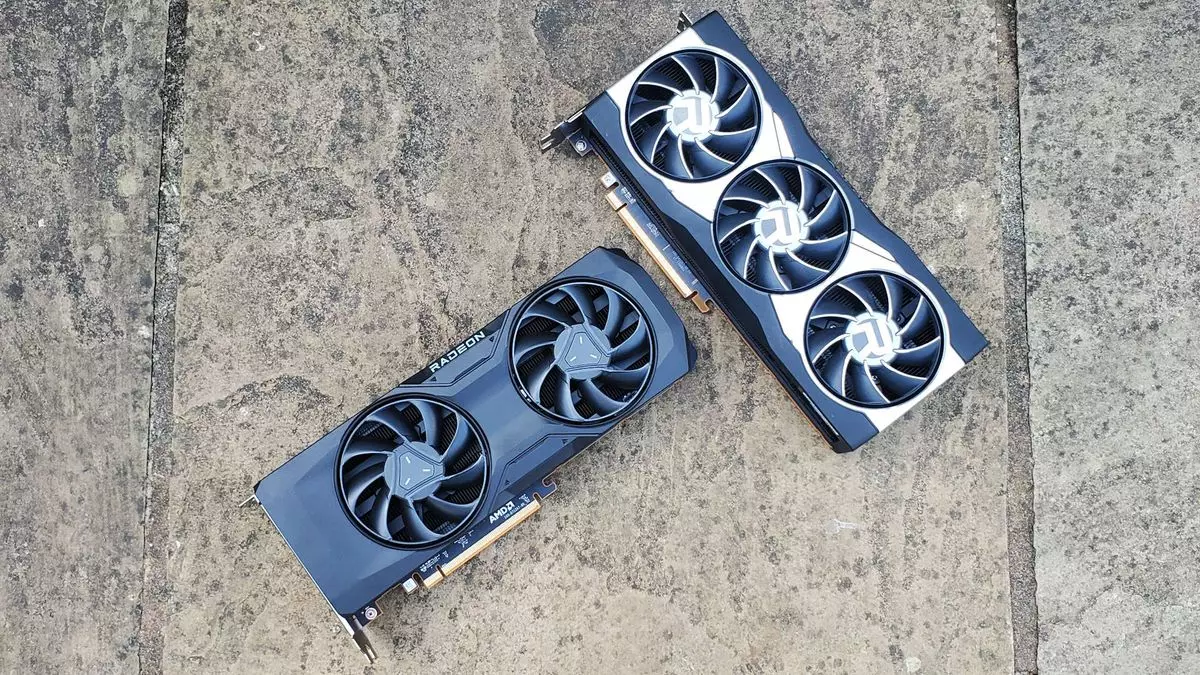AMD has long been a titan in the semiconductor industry, boasting impressive performance from its CPUs and other technologies. However, a notable blind spot remains in its gaming GPU segment. Despite significant achievements in various areas, AMD has struggled to maintain competitiveness with its graphics processing units (GPUs), particularly in PC gaming. This perplexing conundrum was brought into focus during the company’s recent earnings call and raises questions about their strategic direction.
AMD’s CEO, Lisa Su, marked her tenure’s tenth year at the helm by announcing record revenues—$6.8 billion in the third quarter—driven largely by robust sales in both data center CPUs and GPUs, and client-side computer processors. While these figures are undeniably impressive, a stark decline in the gaming division’s revenue has cast a shadow over the overall success story. The gaming segment, which encompasses both PC graphics cards and console chips, saw a staggering 69% year-over-year decline, dropping to a mere $462 million—signifying less than 10% of AMD’s total revenue.
This downturn can, in part, be attributed to the cyclical nature of console sales. As older consoles like the PlayStation 4 and Xbox One age, they inevitably see waning sales. Nevertheless, the declines raise concerns about AMD’s ability to tap into the lucrative GPU market, particularly when faced with growing competition from Nvidia.
AMD’s executives have exhibited optimism regarding their upcoming RDNA 4 architecture, set to launch in 2025. As Su mentioned, this new GPU line aims to enhance gaming performance significantly, particularly in ray-tracing capabilities and artificial intelligence integration. Yet, the issue remains that AMD has been grappling with declining gaming revenues for numerous quarters, and the narrative around RDNA 4 does not directly address the disconnect between product offerings and market needs.
Although there is promise with RDNA 4, history has shown a persistent pattern of underperformance in the PC gaming GPU space. AMD has previously suggested that the upcoming architecture would usher in a dramatic turn of events, but skepticism persists. A breakdown of gaming revenue figures specifically tied to PC graphics cards wasn’t provided, leaving analysts and enthusiasts in the dark about AMD’s actual standing in this critical marketplace.
One of the most contentious topics surrounding AMD’s GPU struggles is its decision to adopt a chiplet architecture for its RDNA 3 graphics cards. This departure from traditional monolithic designs, which had served the company well in previous iterations like the Radeon RX 6000 series, raised eyebrows. While chiplet architecture has proven effective for AMD in CPU design—offering cost efficiencies and flexibility—it appears to have created complications within the GPU segment.
The RX 7700, RX 7800, and RX 7900 series were crafted with this approach in mind, but the results have been lackluster at best. Insights indicate that AMD may pivot back to a more conventional monolithic structure for the RDNA 4 GPUs as a response to past missteps, signaling a retreat from an architectural strategy that seems ill-suited for graphics processing. The full implications of this shift may not be visible until AMD rolls out its RDNA 4 offerings.
Another factor contributing to AMD’s GPU woes could be the company’s growing focus on artificial intelligence (AI). With rapid advancements in AI technologies, AMD has seen its AI GPU revenues match those derived from conventional CPUs within merely a year, indicating that resources and attention may have been diverted from the gaming segment. While seizing opportunities in burgeoning technology sectors is wise, neglecting the gaming market could result in lost ground to competitors.
The uncertainties surrounding the Radeon brand in particular need immediate addressing; AMD is well-positioned financially to ramp up efforts toward revitalizing its presence in PC gaming graphics. The unfortunate truth, however, remains that unless AMD can bridge the gap between innovation and consumer demand, it risks becoming an afterthought in the increasingly competitive GPU landscape.
While AMD has achieved remarkable milestones across various sectors and continues to push boundaries in areas like AI, the ongoing struggles in its gaming GPU division require thorough investigation and a revised strategic approach. As the landscape evolves, AMD has an opportunity to re-engage its audience and reclaim market share, but it must first confront the multifaceted issues it faces within the FPS and gaming community. Only time will tell if the company can overcome these challenges and fulfill its potential in the gaming GPU domain.


Leave a Reply